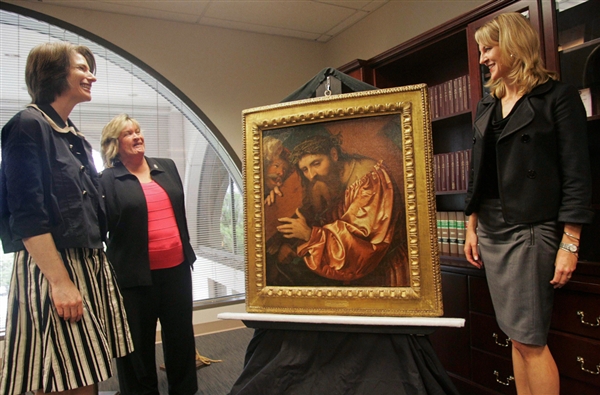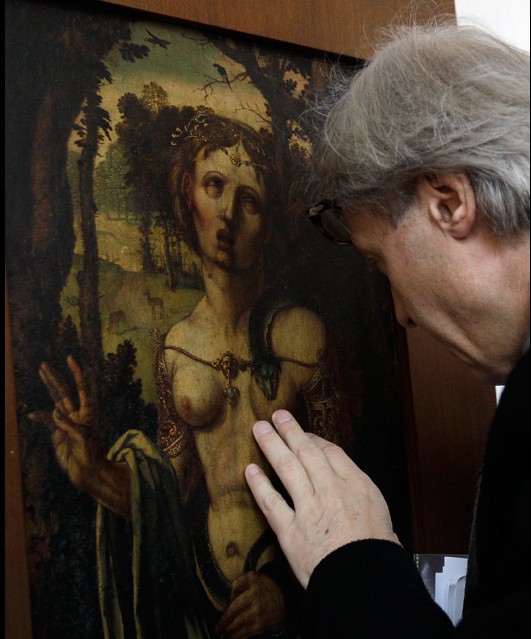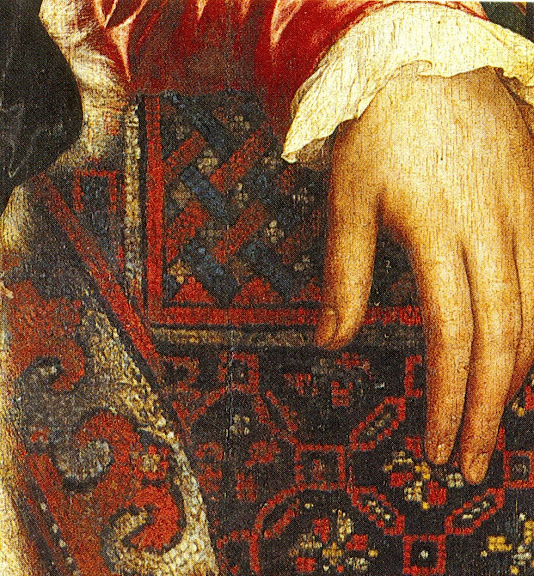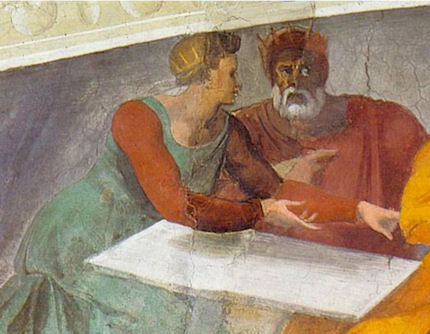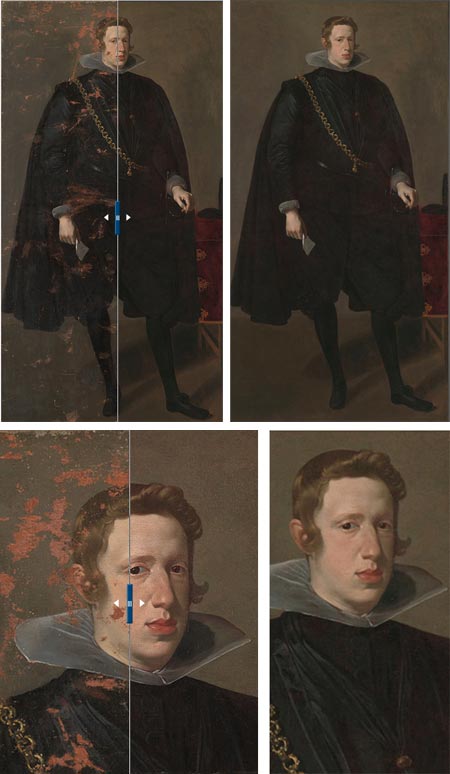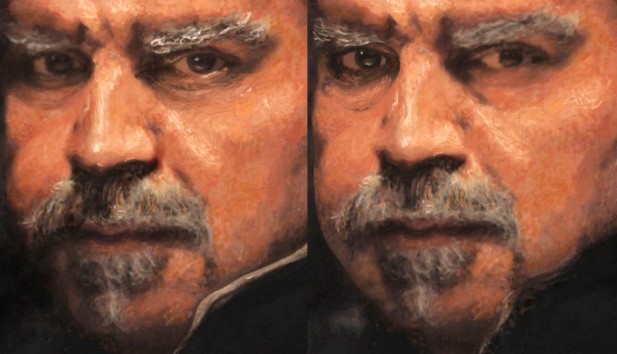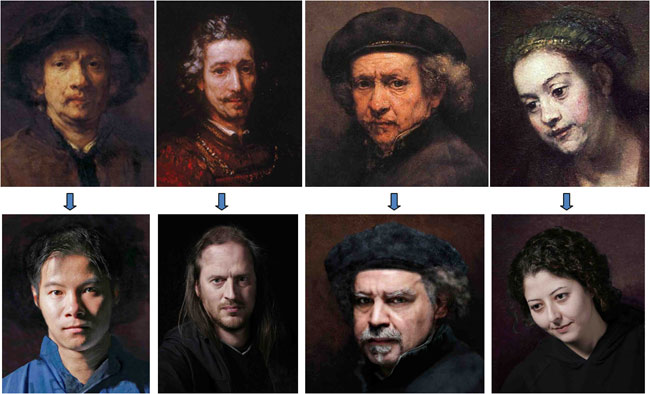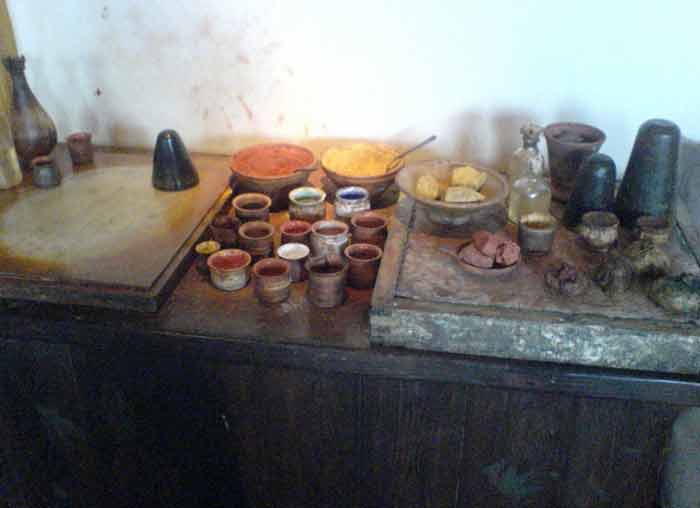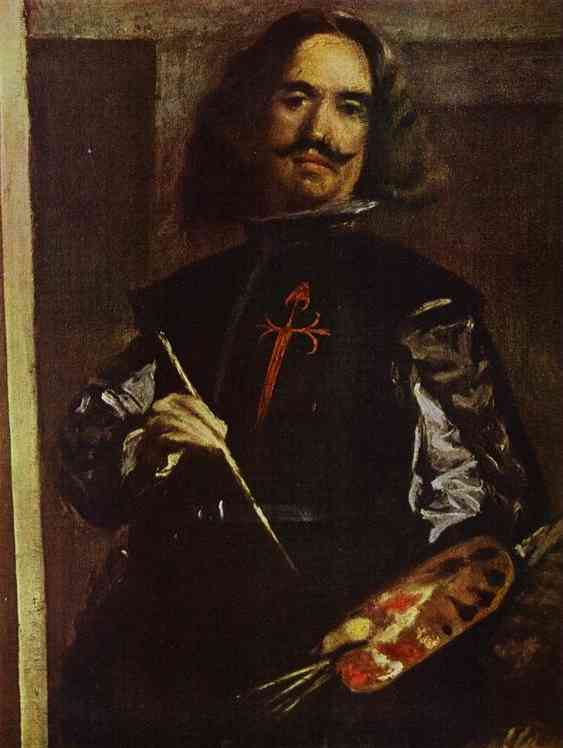On 16 May, 2012 With
The work in question is a 1538 painting by Girolamo de Romani, also known as Romanino, depicting an image of Jesus Christ in an unusual copper-colored robe, carrying the cross on his right shoulder while being dragged by a soldier. It was held in private collections by European families until 1914, when Gentili purchased it. When the Nazis marched into France, many of Gentili’s heirs fled — but weren’t able to take the family patriarch’s art collection and many other valuables. Vichy French authorities auctioned off the property, including more than 70 pieces of art, and barred the family from returning to claim the art work in 1941. The Romanino painting was acquired by the Italian government-run museum Pinacoteca di…
Read More
On 8 May, 2012 With
The two men pulled up in the driveway of the two-star country hotel, looking for all the world like travelling salesmen stopping off for a night’s rest between appointments. But the rectangular package on the back seat of their car contained something rather more valuable than catalogues or brochures. Only once they were in the privacy of a locked room, the curtains firmly closed, did private detectives Robbie Graham and Jack Doyle dare to unwrap the treasure they had just rescued from the criminal underworld. And then they just sat and stared at it in wonder, scarcely able to believe what they were seeing. On that October night in 2007, they took snapshots of themselves posing next to it, using…
Read More
On 1 May, 2012 With
STOLEN ARTWORKS TO BE RETURNED The Carabinieri art squad recovered 16 paintings stolen over a period of decades in the house of a Roman designer. The designer has been charged with receiving stolen goods. His collection is enormous. Police found 180 paintings from a variety of periods reportedly purchased in markets and fairs over the past 30 years. Authorities were tipped off to the collection by a would-be buyer. Unlike the accused, this collector, who was hoping to buy a 15th c. painting of the Sienese school, checked with the Carabinieri art squad to ensure the piece was legitimately owned by the seller. The squad looked into the collection and found one piece listed in their stolen art database: Suicide…
Read More
On 21 Apr, 2012 With
The controversial Restoration of Holbein’s “Ambassadors” The Early Music pioneer (Sir) John Eliot Gardiner recently left the Daily Telegraph’s music critic, Ivan Hewett, reeling with incredulity by saying that he had not seen himself as a crusading musicological force but simply as a jobbing musician who recognised that “other views are valid, as long as they’re convincing in performance”. For Hewett, Gardiner had long epitomised the radical movement to “scrape the varnish” off music by playing on obsolete period instruments and eschewing later styles and types of musical understanding in attempt to produce historically authentic performances. For over half a century after the Second World War picture restorers at the National Gallery, London, sought to recover the historically authentic appearances of paintings by first removing…
Read More
On 19 Apr, 2012 With
The Controversial Restoration of Michelangelo’s Sistine Chapel Ceiling No single proof of a restoration-induced injury to a work of art could be clearer than the photograph shown here (Fig. 1) of a section of Michelangelo’s Sistine Chapel ceiling frescoes. It was taken after the last restoration and shows in its centre section a repair made in 1566 by the painter Domenico Carnevale when a section of Michelangelo’s fresco fell away during settlement of the building (see Fig. 2 diagram). Carnevale had re-plastered the loss and, while the plaster surface was still wet, faithfully painted it to match Michelangelo’s (then) surrounding colours and tones. The repair was a good one and for centuries it remained almost invisible (see Figs….
Read More
On 2 Feb, 2012 With
The Restoration of a Velázquez In 1973, for reasons still not clear to me, the Metropolitan Museum of Art in New York undertook a sweeping reassessment of many of its holdings, resulting in the downgrading of 300 old master paintings from attribution to the master to attribution to “workshop of”, “circle of” or “follower of”, removing them from the canon of those masters’ works and significantly depleting the value of the museum’s collection. Some of those pieces have been again reassessed, both in the light of continued scholarship and as the result of subsequent cleanings and restorations. Last year the Met cleaned and restored Velázquez’s Portrait of a Man, and in the process restored it to it’s original attribution — originating…
Read More
On 31 Jan, 2012 With
REMBRANDT portraits decoded A University of British Columbia researcher has uncovered what makes Rembrandt’s masterful portraits so appealing. In the study, published in the current issue of the Massachusetts Institute of Technology’s arts and sciences journal Leonardo, UBC researcher Steve DiPaola argues that Rembrandt may have pioneered a technique that guides the viewer’s gaze around a portrait, creating a special narrative and “calmer” viewing experience. Renaissance artists used various techniques to engage viewers, many incorporating new scientific knowledge on lighting, spatial layout and perspectives. To isolate and pinpoint factors that contribute to the “magic” of Rembrandt’s portraits, DiPaola used computer-rendering programs to recreate four of the artist’s most famous portraits from photographs of himself and other models. Replicating Rembrandt’s techniques,…
Read More
On 25 Jan, 2012 With
Secrets of Rembrandt’s Painting Technique Rembrandt’s paintings have transfixed viewers for centuries, but now a new study reveals a scientific explanation for their calming beauty. By painting more detail in and around the eyes of his subjects, Rembrandt tapped into an innate human attraction to the face. This creates a more calming and immersive experience for the viewer. To figure out Rembrandt’s painting secret, scientists used computer rendering to match photos of current models (and a scientist) with four of Rembrandt’s portraits. They manipulated four regions of the portraits: regions centered about each eye, on each side of the chin, and the region where the collar meets the skin of the neck. CREDIT: Steve DiPaola, James Enns, Caitlin Riebe. Steve…
Read More
On 20 Dec, 2011 With
Oil painting techniques: Rembrandt’s Palette Rembrandt was a Dutch painter and etcher. He is generally considered one of the greatest painters and printmakers in European art history and the most important in Dutch history. Lead white Ochres Bone black Vermillion Siennas Raw umber Burnt umber Lead-Tin Yellow Cassel earth
Read More
On 18 Dec, 2011 With
The Old Masters: Velázquez’s Palette Diego Rodríguez de Silva y Velázquez was a Spanish painter who was the leading artist in the court of King Philip IV. According to Carmen Garrido, Head of Technical Services at the Prado Museum in Madrid and author of Velázquez: Tecnica y Evolución, Velázquez’s palette consisted of the following colors: WHITE: composed of lead white and calcite YELLOW: yellow iron oxide, lead-tin yellow, and Naples yellow (the latter, sparingly) ORANGE: orange iron oxide and vermilion of mercury RED: red iron oxide, vermilion of mercury, and organic red lake BLUE: azurite, lapis lazuli, and smalt BROWN: brown iron oxide and manganese oxide BLACK: organic black of vegetal or animal origin GREEN: azurite, iron oxide, and lead-tin yellow PURPLE: organic red lake and…
Read More


